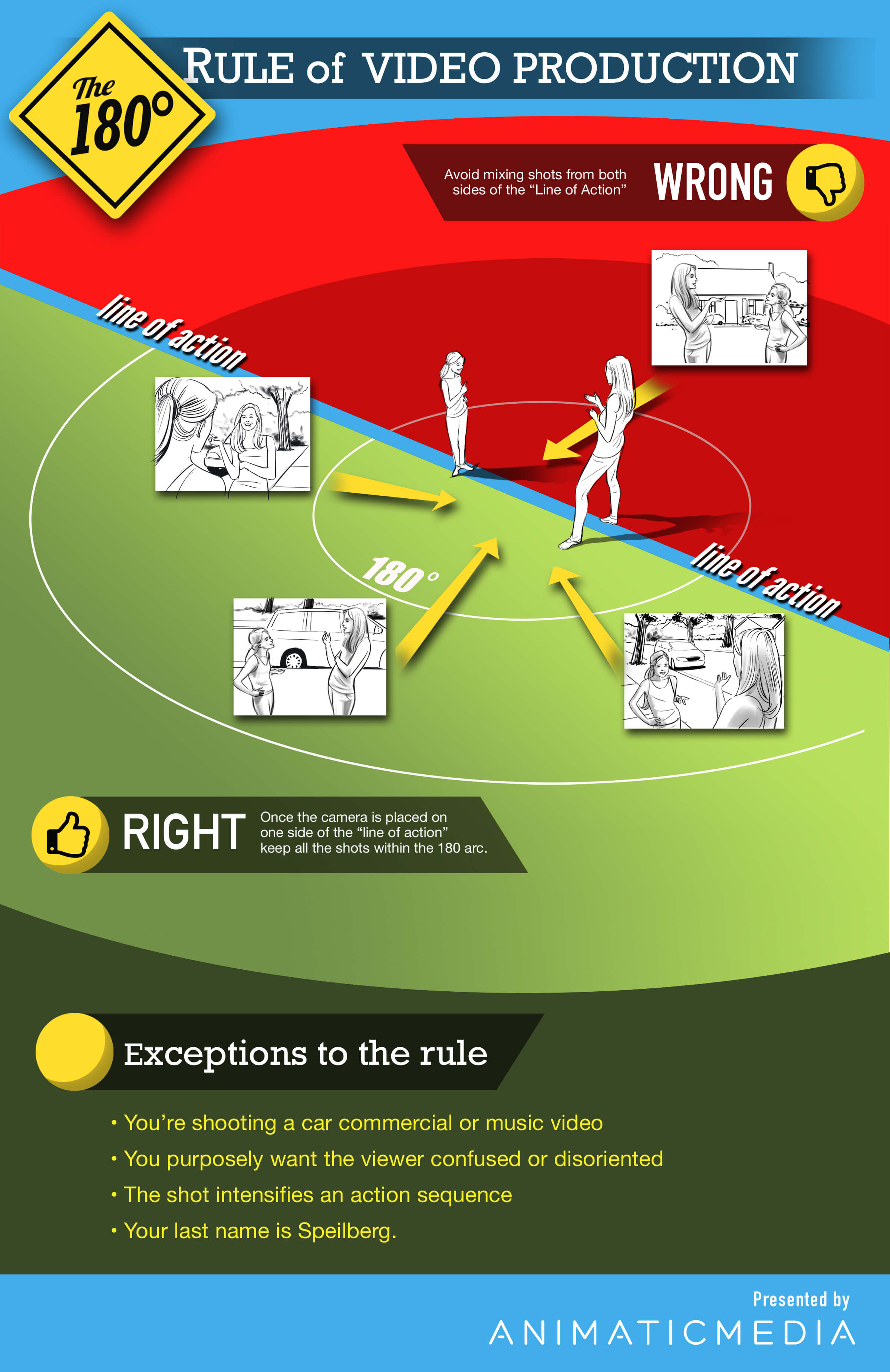When you’re pitching any narrative storyline – it pays to know the rules of film before you break them.
Kubrick broke this rule to great effect in the movie “The Shining.” Top commercial car directors take viewers on wild cinematic journeys as they often break this rule. But break this rule in a pharmaceutical animatic and you can leave the viewer feeling disoriented, with the end result being much worse. Your animatic fails in market research.
What is this rule called that directors know yet of which many agency junior creatives are blissfully unaware? Let me explain. Names have been changed to protect the innocent.
July 23rd, 2013– 2:03 pm Los Angeles. During the briefing call between an internationally known advertising agency and my creative team (the animatics shop) the agency producer explained that their client was so happy with the storyboards, they didn’t want to change anything in the animatic. “It’s perfect- just use those frames for the animatic,
don’t change a thing! ”
There was a problem. A big one. Somewhere in the shuffle, someone had forgotten one of the most basic film rules! And not just a few times, but so many times If a misdemeanor was issued for its occurrence, we would be spending time locked up with Bernie Madoff pondering– “Why, why did we let that spot go into testing!”
Before I continue, let me digress. I have spent half of my adult life as a storyboard artist–working for top commercial directors in Hollywood including David Kellogg, Leslie Dektor and the other half founding and operating a full-service animatics production company. I’ve been fortunate enough to have worked with the leading creative talent at advertising agencies across the globe and learned from the best the rules of film. When we review scripts in briefing calls that have story issues, it's my job to point out potential problems and make positive suggestions to fix them.
Back to the briefing.
“Taking a look at your storyboard, I see in frame 3 you have the people walking from left to right, but in frame 4 they are walking right to left.” I continued, “ Instead of flopping the action I suggest we move the camera for the reverse shot…” the agency producer interrupted, “No, let's just keep to the board.”
Still determined to make it work I continued, “Well what if we add a shot in between, a buffer shot to better orient the viewer?”
Agency producer now getting a bit testy- “No like I said,
don’t change a thing!”
I knew at this point pushing it further was pointless. I resolved myself to the fact we had gotten into the proverbial speeding car that’s heading straight towards a wall. Except this wall is known as the barricade of testing doom. The brand was a luxury consumer product and the concept was solid but the storyboard was broken and displayed an oblivious disregard for the “180 rule” sometimes referred to “Crossing the line.”
The 180 rule is a very important concept in video and film production. It refers to an imaginary line which cuts through the middle of the scene, from side to side with respect to the camera. Once the camera is placed on one side of the line, you shouldn't cross it unless the story calls for a shot to disorientate or confuse the viewer.
The attached infographic is a much easier way to grasp the concept.
Download high resolution file

Hope you learned something about the 180 rule. The next time someone tries to slide a storyboard past you with this infraction call them out on it. Please share with friends if you enjoyed. Thank you!


